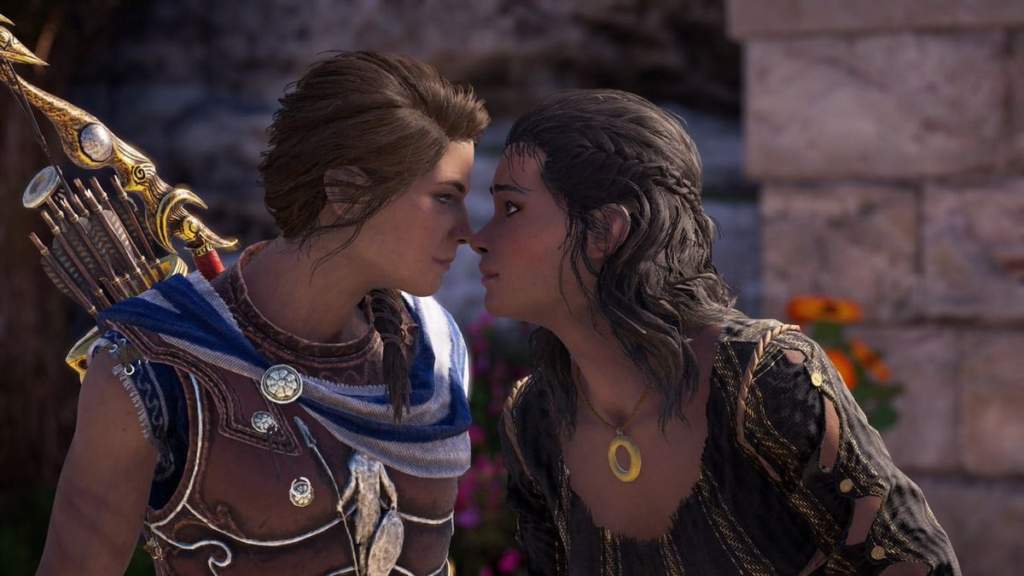
In the Game of Love, Freedom of Choice Does Not Equal Queer Representation
Over the past decade we’ve seen an increase in the number of games offering same-sex romance options, with games such as Assassin’s Creed: Odyssey, The Elder Scrolls: Skyrim and Fallout 4 allowing players to romance supporting characters of their choosing. However, these series typically apply ‘blanket pansexuality’ to their romance options. This is where developers, in an effort to be more inclusive, make all of the romanceable companions in a game available to all players, regardless of the gender of the player character.
This has been good progress for gaymers, but it’s important to remember this approach is player-focused. Blanket pansexuality, or ‘playersexual’ options, are more concerned with satisfying the wants of the player with minimal creative input, than it is with delivering accurate representation via a well thought-out, diverse cast of queer characters. The LGBTQ+ community is instead reduced to a handful of romanceable pansexual companions whose queerness is employed as a tool and has no bearing on their character.
This kind of reductionism is not conducive to progress, as it excludes many sections of the LGBTQ+ community. If developers are simply trying to tick the diversity box, and believe they are successfully doing so by providing same-sex romanceable companions, then they are unlikely to delve any deeper into the queerness of specific companions, leaving very little room for the exploration of gender identity. If a game’s entire framework for queer representation is built around romance quests, then it’s difficult to see where asexuality and aromanticism fit into into that dialogue. It also isn’t a helpful representation of bisexuality or pansexuality. Both outside of and within the LGBTQ+ community, bisexual and pansexual individuals are often unfarily percieved as promiscuous. Reducing bi or pan companions to sexual fodder for the player character serves only to accentuate that misconception.
However, it should be noted that for games like Skyrim, which employed blanket pansexuality when it was released back in 2011, that choice provided an important step on the road to progress. That’s what it needs to be, though; just a step. We shouldn’t be seeing more recently released games such as Assassin’s Creed: Odyssey still employing this tactic. It’s time to move on from this framework and progress as an industry.
The Dragon Age series is a great example of how a video game series has evolved past using pansexuality as a tool. Its third installment Inquisition moves on from the blanket pansexuality employed in the second instalment to deliver what is arguably the best queer representation in a mainstream video game. The cast is diverse and full of both romanceable and non romanceable queer characters, whose queerness is clearly derived from their character rather than the needs of the player. More recently, The Outer Worlds shunned romanceable companions completely, and delivered a fantastic queer companion in Pavarti who is a bastion of well conceived asexual representation in AAA gaming.
In these games, we see a clear path forward for the gaming industry – they hired and consulted queer writers to create fully realised, engaging queer characters who we can relate to. If developers are serious about queer representation in their games, then they need to put their money where their mouths are by hiring more queer creators and listening to the queer employees they may already have.
Freedom of choice is not the same as fully realised representation. It’s reaffirming and reassuring for us as queer people to see ourselves in mainstream media and video games are no exception to this. For those still questioning themselves, something as simple as identifying with a character in their favourite game can bridge a surprisingly large gap on the journey to self acceptance. Being queer is often a difficult experience – game developers have a responsibility to their queer players to ease that burden where they can.





